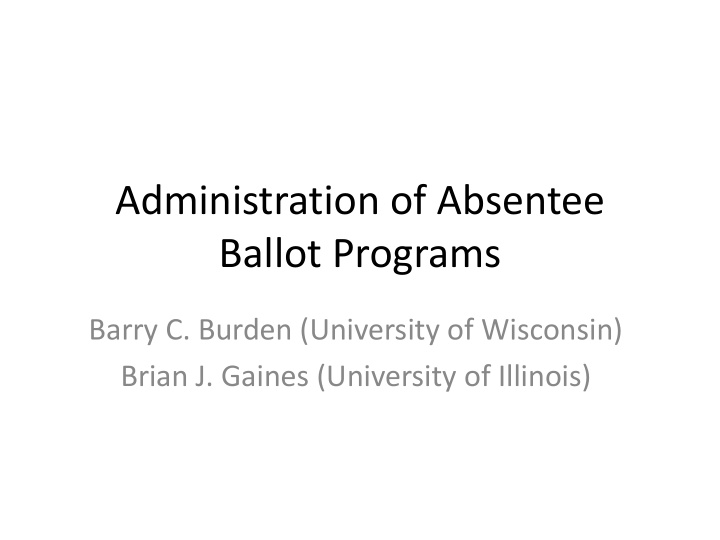



Administration of Absentee Ballot Programs Barry C. Burden (University of Wisconsin) Brian J. Gaines (University of Illinois)
Key Terminology • Precinct, Election-Day Voting – Secret ballot cast at official polling place on official Election Day • Convenience Voting – Absentee: ballots can be obtained and returned by mail, in advance of Election Day, completed in uncontrolled setting of voter’s choice – Vote-by-Mail: all ballots cast absentee – Early Voting: secret ballot cast at official polling places prior to official Election Day
Absentee Logistics • Ballot requests – Excuse or no-Excuse? – How? By mail, internet, in- person, phone,…? • Ballot submission – How? By mail, in-person, by third-party – Voter-validation: signature and witness requirements, multiple envelopes • Ballot processing – Accept or reject according to due date, voter-validation requirements – When processed/counted – When opened and votes counted
Inherent Tradeoffs (no “best” practice) • Full across-state coordination on dates, format, etc. is unrealistic (contrary to robust federalism). • Later deadlines could lower rejection rates, but burden officials, delay tabulation. • Less difficult voter-validation can lower rejection rates, but facilitates fraud. • Convenience voting complicates late ballot changes, but is popular and growing.
Best-Practice Recommendations 1. Early voting is more secure than absentee voting and thus should be preferred. 2. Requests for absentee ballots should be accepted by a variety of means including mail, phone, fax, electronic mail, and Internet web sites. 3. States should provide pre-paid postage with absentee ballots. 4. The potential for online submission of absentee ballots should be studied, but approached with caution. 5. States should facilitate and encourage after-the-fact checking by absentee voters to determine whether their ballots were accepted and counted. 6. States should not tally absentee ballots in advance of Election Day.
Recommend
More recommend